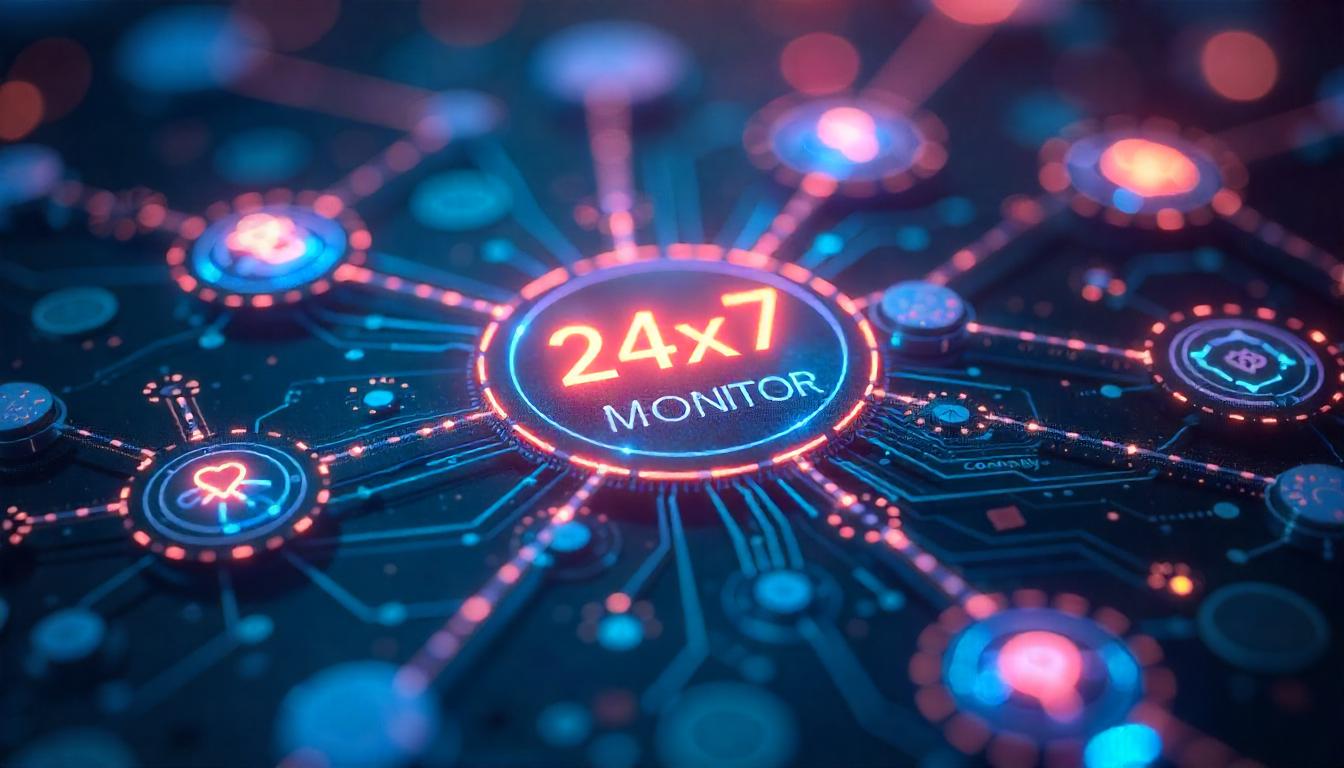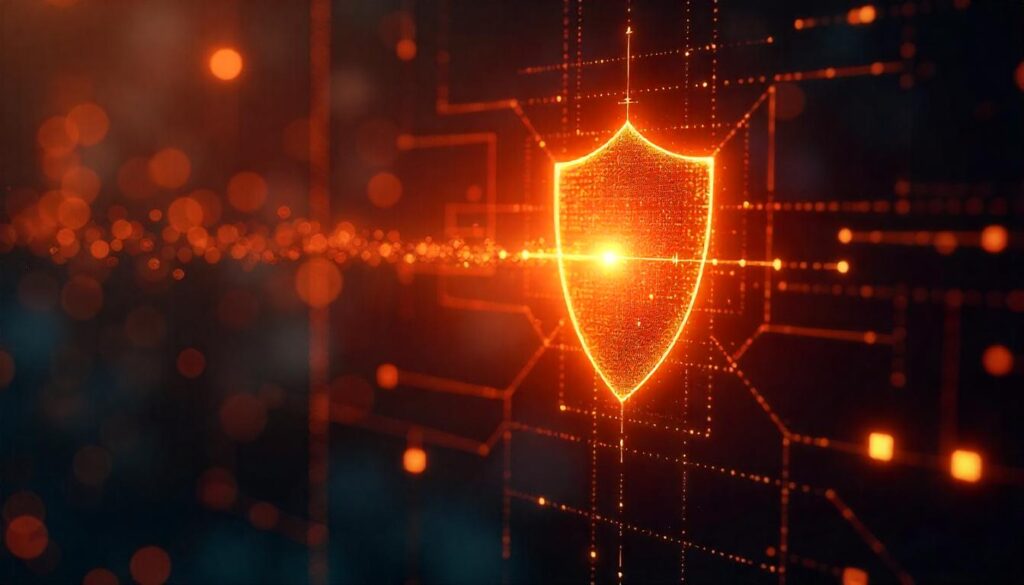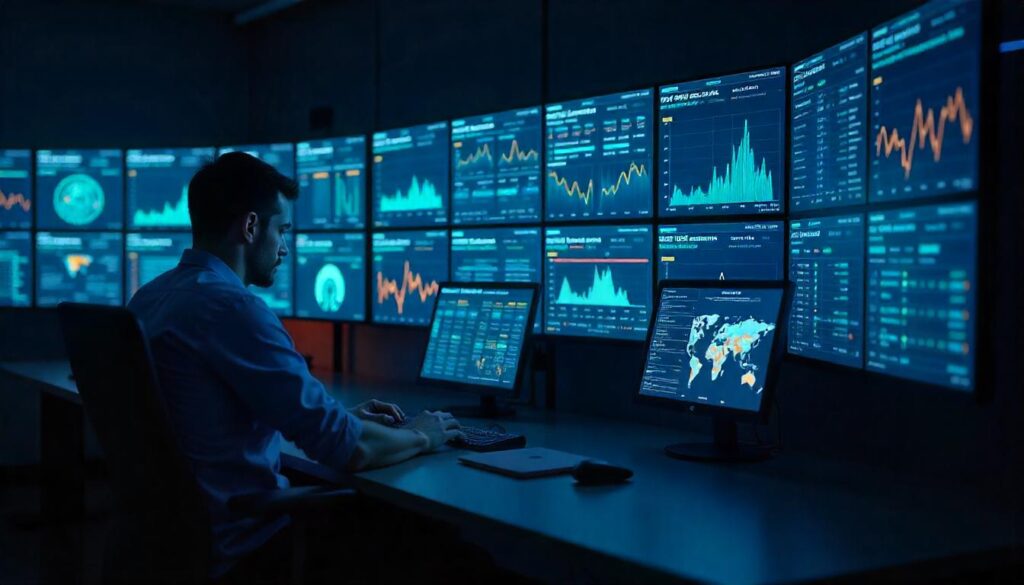Address
304 North Cardinal St.
Dorchester Center, MA 02124
Work Hours
Monday to Friday: 7AM - 7PM
Weekend: 10AM - 5PM
Address
304 North Cardinal St.
Dorchester Center, MA 02124
Work Hours
Monday to Friday: 7AM - 7PM
Weekend: 10AM - 5PM

Cyber threats don’t follow office hours. That’s why 24×7 SOC monitoring matters. We’ve helped MSSPs pick tools that catch threats at 2 a.m., not two days later. It’s not just faster detection, it’s damage control, compliance support, and smoother operations. A nonstop SOC gives businesses fewer surprises and stronger defenses.
We’ve seen teams cut breach exposure by over 90% with the right monitoring setup. The real benefit? Staying ahead of attackers, not just reacting to them. This kind of vigilance isn’t optional, it’s the edge every MSSP needs. Keep reading to see what that edge looks like in action.
Cyber threats don’t work 9 to 5. They creep in at night, on weekends, and even during holidays when most teams are offline. We’ve seen this first-hand while helping MSSPs audit new security products. If your SOC isn’t always watching, something important can slip by unnoticed.
That’s why 24×7 security monitoring matters. A strong Security Operations Center (SOC) keeps eyes on every network event, every login, every file movement, nonstop. It’s not just about visibility; it’s about not missing the first sign of trouble.
With around-the-clock monitoring:
When we test products for MSSPs, we always ask: Does it alert us at 3 a.m. if something strange happens? If not, we don’t recommend it.
It’s one thing to see the threat. It’s another to stop it. We push MSSPs to look for solutions that can act instantly, but also know when to wait for a human decision.
The best SOCs combine two things:
A ransomware file trying to encrypt a folder? That needs immediate auto-containment. But a strange admin login from another country? That’s where trained eyes come in.
We’ve seen SOC platforms that reacted in under a second to malware behavior, buying precious time. But we’ve also watched SOC analysts spot subtle insider threats that AI missed. That balance is key.

In the past, it could take 6 months or more before anyone even noticed a breach. During our audits, we’ve found cases where attackers were active for over 200 days before detection. That’s unacceptable.
With real-time SOC coverage, detection shrinks to hours, or less. We’ve worked with MSSPs who cut their dwell time by 90% using better alerting and stronger log analysis.
Shorter detection time means:
Speed matters. Every minute saved limits what an attacker can do.
When threats get caught fast, business doesn’t grind to a halt. We’ve helped MSSPs respond to incidents that could’ve knocked out entire networks, but thanks to early alerts, the damage was minimal.
Quick response:
One of our clients avoided a full-scale breach because their SOC caught a phishing email before anyone clicked it. No accounts were compromised, no resets needed, and no downtime logged. That’s the kind of result every MSSP wants to deliver.
SOC teams aren’t just sitting back and watching alerts. They’re on the hunt. In our consulting work, we show MSSPs how to build detection logic that finds the threats before they scream.
Proactive threat hunting looks for:
We’ve uncovered hidden malware this way, stuff that sat silent and would’ve never triggered standard alarms.
The role of SOC isn’t just to react, great SOCs anticipate threats before they strike. Experienced analysts are trained to look at the big picture.
They ask:
We help MSSPs train their teams to connect dots, turning isolated events into full-blown detection stories.
Modern SOCs have access to more data than ever, but that only helps if you can make sense of it. AI and threat intel make this possible.
Good products we recommend to MSSPs will:
We’ve seen tools that flag threats within seconds of new CVEs going public. That’s the kind of edge you need.
SIEM platforms are the backbone of any serious SOC. They collect and make sense of logs from across the entire environment.
When we evaluate SIEM tools for MSSPs, we look for:
24×7 SOC services can scale to meet the needs of any organization, adapting to growth and evolving IT environments to provide consistent and comprehensive protection (1). A well-tuned SIEM tells you what matters now, not just what happened yesterday.
IDS still play a big role. They monitor traffic for known attack signatures. When paired with live threat feeds, they’re even more effective.
What we like to see:
The best SOCs use this data to block threats before they hit endpoints.

Most of our MSSP clients serve industries where compliance is non-negotiable. That includes:
We guide SOCs to maintain continuous logging, asset visibility, and strong access control, all required by auditors.
Audits come fast and often. Without clear logs, you fail. A mature SOC:
We’ve helped teams clean up messy log systems, ensuring full traceability when regulators show up.
When an incident happens, stakeholders expect answers, fast. SOCs need to deliver:
One of our MSSP partners shares sanitized versions of these reports with their clients, it builds trust and shows professionalism.
Building a 24×7 SOC from scratch is expensive. We’ve run the numbers with MSSPs, and the upfront costs alone, analyst salaries, tech stacks, redundancy, can hit seven figures.
Managed services reduce those costs. You get:
Based on real cases we’ve handled, here’s how the costs break down:
MSSPs working with us often go hybrid, outsourcing for coverage while retaining internal teams for response.
Offloading the noisy part of monitoring frees your team up. They can work on:
We help MSSPs identify which tasks to outsource and which to keep. It’s about using people where they’re strongest.
False positives are the enemy. The right tools:
With a dedicated SOC, organizations can improve operational efficiency by allowing IT staff to focus on primary responsibilities, leading to smoother operations (2). This makes analysts faster and prevents burnout. We’ve seen SOCs triple their output just by tuning alerts better.
Today’s threats include:
The SOC has to recognize them all. We guide MSSPs toward platforms that spot attack signatures, behavioral anomalies, and everything in between.
By reviewing logs and flows in real time, SOCs see:
These red flags are harder to fake, and we make sure detection rules cover the edge cases.
Not every alert needs the top analyst. Good SOCs:
We audit these playbooks to ensure they’re up-to-date and cover new attack types.
Senior analysts handle:
With clear playbooks, they act fast. We’ve helped teams reduce mean time to respond by 50% just by fixing their workflow.
When systems go down, money is lost. SOCs that respond fast keep things running. We show MSSPs how to test recovery plans and prepare their clients for the worst.
Fast containment means:
We’ve worked with teams that restored full service in under an hour, because the SOC had a plan.
Backup systems, cloud failover, and pre-approved access policies all play a role. A good SOC knows what’s critical and guards it first.
When breaches happen, trust can vanish. But strong SOCs reduce the risk and handle comms professionally.
Catch threats early, and you never have to tell the press. That’s the goal. We help MSSPs document their defenses so they’re ready if questions come.
Regular reports, compliance scorecards, and even dashboards keep everyone in the loop. Transparency wins trust.
Challenges include:
We help MSSPs fix gaps through vendor selection, automation, and ongoing training.
SOC work is hard. To retain talent, we suggest:
These keep good analysts from burning out or leaving.
Attackers evolve fast. SOCs must evolve faster. We:
A SOC that stands still falls behind. We promote:
New threats = new responses. SOC playbooks must change often. We review them every six months with our clients.
SOCs provide insight into what’s working and what’s not. We use that data to improve policies, tools, and training.
Threat trends shape risk planning. SOC logs show where gaps are. We build those insights into board-level decisions.
Security supports growth. We ensure SOC strategies line up with:
Today’s SOCs help with:
We show MSSPs how to evolve their services to meet these needs.
Regulators want proof. SOCs provide it. We help teams turn technical reports into executive insights.
Cloud? SaaS? Remote work? We’ve helped SOCs monitor it all. The right tools adapt, and we help MSSPs pick them.
24×7 SOC monitoring benefits include continuous security monitoring, real-time threat detection, and rapid incident response. These services offer around-the-clock cybersecurity, proactive threat mitigation, and reduced downtime. By ensuring improved business continuity and an enhanced security posture, organizations can better comply with regulations and protect against various cyber threats.
Continuous security monitoring watches every layer of the MSSP’s infrastructure. It helps with real-time threat detection and rapid incident response. This means problems are found and fixed quickly, reducing downtime. It also supports proactive threat mitigation and keeps your business running smoothly.
A SOC provides cost-effective security by using managed security services. It helps with SIEM integration and employs expert security analysts. This setup allows for automated alert filtering and better resource optimization. It also improves the ROI on SOC investment and reduces operational costs.
Managed security services assist with compliance with regulations by offering continuous security monitoring and real-time threat detection. They provide compliance reporting and help with security policy enforcement. This ensures that businesses meet required standards and improve their security posture.
SIEM integration helps improve security operations efficiency by enabling security event correlation and automated alert filtering. It supports faster threat identification and aids in security incident management. This integration also enhances threat intelligence feeds and continuous log analysis.
The benefits of 24×7 SOC monitoring, faster threat detection, stronger compliance, and less downtime, are clear from experience and data. Continuous security monitoring helps MSSPs manage risks, improve their security posture, and support business continuity. With expert guidance, you can streamline operations, reduce tool sprawl, and boost service quality.
If your SOC is ready for the next step, let’s talk tools and workflows that actually work. We’re here to help MSSPs get results from their security investments, without the noise or fluff.